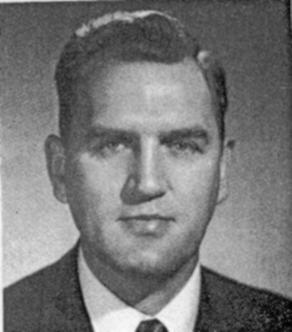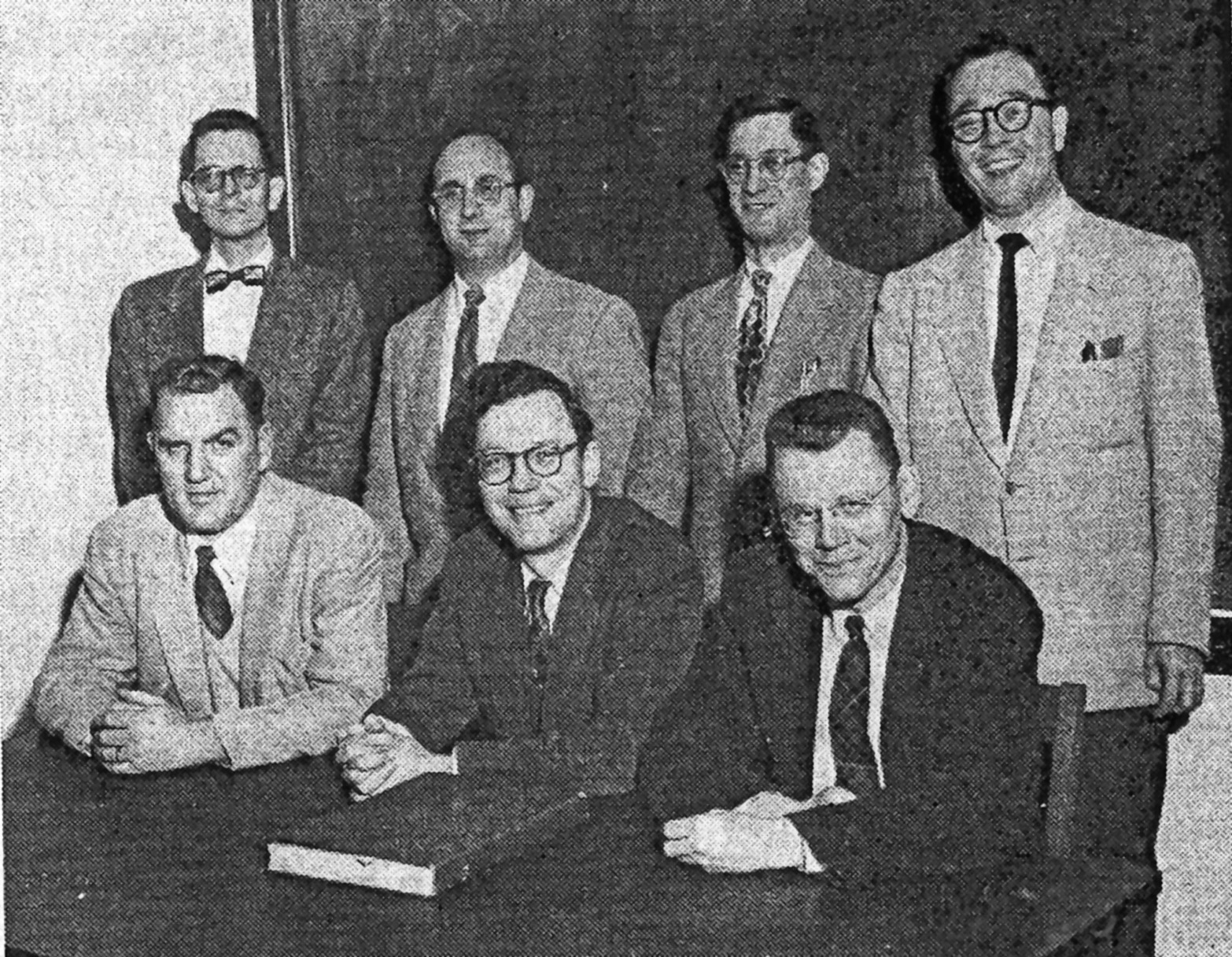 1950 is a landmark year, for it is the year The Department of Philosophy and Psychology
formally split into two departments. The Department of Psychology being chaired by Stanford
Ericksen, pictured here.
1950 is a landmark year, for it is the year The Department of Philosophy and Psychology
formally split into two departments. The Department of Psychology being chaired by Stanford
Ericksen, pictured here. In 1943-1944, the year after Sanborn retired, the faculty of the Department of Philosophy and Psychology numbered four: R. C. Provine (Philosophy), E. Bugg (Philosophy and Psychology), Chairman N. Munn (Psychology), and M. Crawford (Psychology - but on leave in military service). The college Dean, F. Paschal, also taught a few Psychology classes.
No program or faculty changes occurred during 1944-1945 with the notable exception of part-time "military" lecturers, one of which was Neal E. Miller. Before the war Miller was on the faculty at Yale University, but in 1944 and 1945 he was an army officer in charge of research at the Army Air Corps' Psychological Research Unit #1 in Nashville. After the war, of course, he returned to Yale and made, as noted here, revolutionary contributions to the field of psychology.
In 1946 Norman Munn, as discussed in the previous section, left for Bowdoin College. Dean Meredith Crawford replaced him with Stanford C. Ericksen and the department began to expand. Two were added in 1948, Leland Thune and George Copple, both to stay until their retirements in the 70's. Leland ("Lee") Thune had just finished his PhD at the University of Iowa. His dissertation was on human verbal (paired-associate) learning, but it was directed by Kenneth Spence, of animal learning and learning theory fame. Lee set up the department's first rat lab, but his major research line stayed in human learning. George Copple was a clinical psychologist and was hired initially on a part-time basis.1949 saw the addition of William Pickering and John Gustad, but both departed in three years.
 1950 is a landmark year, for it is the year The Department of Philosophy and Psychology
formally split into two departments. The Department of Psychology being chaired by Stanford
Ericksen, pictured here.
1950 is a landmark year, for it is the year The Department of Philosophy and Psychology
formally split into two departments. The Department of Psychology being chaired by Stanford
Ericksen, pictured here.
"Stan" Ericksen was born in 1912 and grew up in Salt Lake City, Utah. He received his A. B. and M.A. from the the University of Utah and proceeded to the University of Chicago where he worked with I. Krechevsky on rat and human maze learning and transfer. (Krechevsky's early work offered an alternative to the then dominant S-R view of rat learning, arguing it involved 'hypothesis-forming-and-testing'. Krechevsky later changed his name to David Krech). Completing his PhD dissertation in '37 or '38, Ericksen started his academic career at the University of Arkansas. During the war he was in the United States Air Force where he received the Army Commendation Ribbon for research on human learning and transfer. In 1946 he accepted an offer from Dean Meredith Crawford to chair the Department of Psychology and Psychology at Vanderbilt.
In the next ten years the department grew in number and breadth. By 1953 the size numbered seven faculty - all hired since Norman Munn left in 1946. The 1953 faculty are pictured next.
 Psychology faculty in 1953.
Psychology faculty in 1953.
Back row:
Robert Soar, Industrial
Theodore Landsman, Clinical, Director of Counseling Service
Arthur Canter, Clinical
Gilbert
Meier, Physiological
Front Row:
Stanford Ericksen, Experimental, Social
George Copple, Clinical
Leland E. Thune, Experimental
.
In 1956 the department added Warren Webb and Carroll E. ("Cal") Izard. Webb received his PhD from Duke and was given a joint appointment in the Psychiatry Department in the Medical School. He retired in 1986. Izard received his PhD at Syracuse and apparently replaced Arthur Canter. He stayed until 1975, eventually making his way to the the University of Delaware, where he remains (as of 2011) Trustees Distinguished Professor, running the Human Emotions Lab. He is known for development of the Discrete Emotions Theory.
In the decade of the 50's the department: